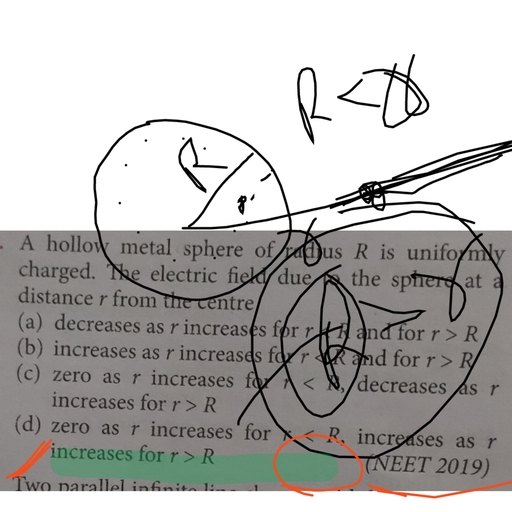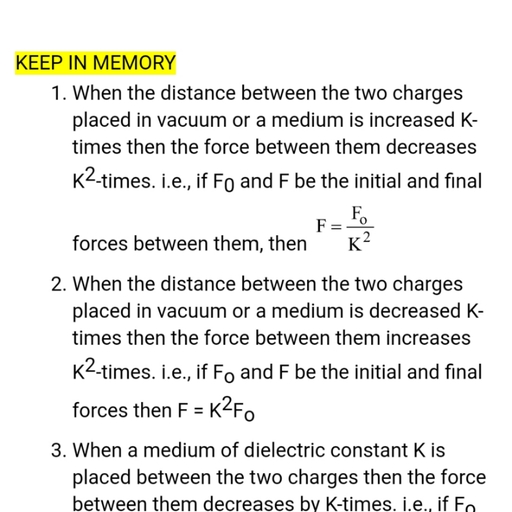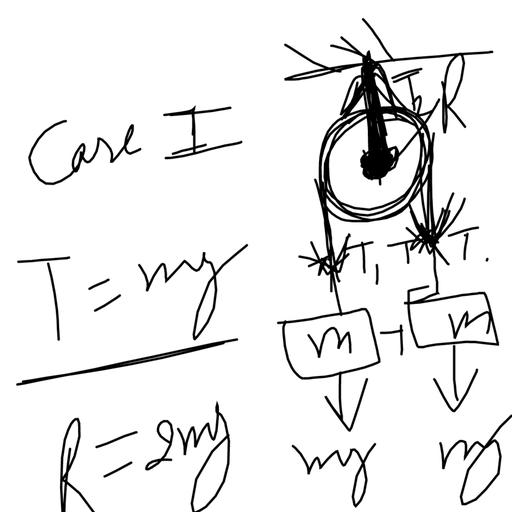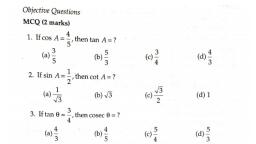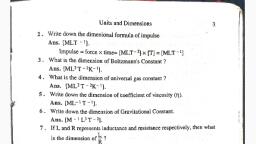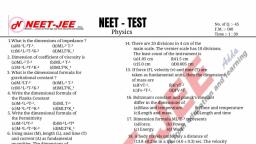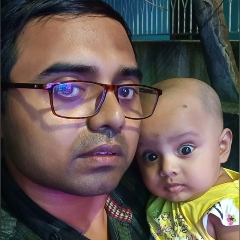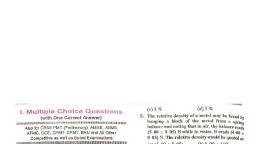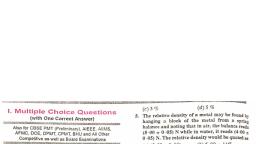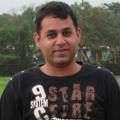Question 1 :
Number of significant figures in expression {tex} \frac { 4.327 \mathrm { g } } { 2.51 \mathrm { cm } ^ { 3 } } {/tex} is
Question 3 :
Young's modulus of a material has the same unit as that of
Question 4 :
If unit of length and force are increased 4 times. The unit of energy
Question 5 :
A thin copper wire of length {tex} l {/tex} metre increases in length by {tex} 2 \% {/tex} when heated through {tex} 10 ^ { \circ } \mathrm { C } {/tex}. What is the percentage increase in area when a square copper sheet of length {tex} l {/tex} metre is heated through {tex} 10 ^ { \circ } \mathrm { C } ? {/tex}
Question 6 :
In a simple pendulum experiment, the maximum percentage error in the measurement of length is {tex} 2 \% {/tex} and that in the observation of the time- period is {tex} 3 \% . {/tex} Then the maximum percentage error in determination of the acceleration due to gravity g is
Question 7 :
If {tex} x = a t + b t ^ { 2 } , {/tex} where {tex} x {/tex} is the distance travelled by the body in kilometers while {tex} t {/tex} is the time in seconds, then the unit of {tex} b {/tex} is
Question 8 :
If {tex} Z = A ^ { 3 } , {/tex} then {tex} \frac { \Delta Z } { Z } = {/tex}
Question 9 :
The magnitude of the difference between the individual measurement and true value of the quantity is called
Question 12 :
Young's modulus of steel is {tex} 1.9 \times 10 ^ { \mathrm { 11 } } \mathrm { N } / \mathrm { m } ^ { 2 } {/tex} When expressed in CGS units of dyne/cm {tex} ^ { 2 } {/tex}, it will be equal to {tex} \left( 1 \mathrm { N } = 10 ^ { 5 } \mathrm { dyne } , 1 \mathrm { m } ^ { 2 } = 10 ^ { 4 } \mathrm { cm } ^ { 2 } \right) {/tex}
Question 15 :
Which two of the following five physical parameters have the same dimensions?<br>(A) Energy density <br> (B) Refractive index<br> (C) Dielectric constant<br> (D) Young's modulus<br> (E) Magnetic field<br>
Question 17 :
The pitch of the screw gauge is {tex} 0.5 \mathrm { mm } {/tex}. Its circular scale contains {tex}50{/tex} divisions. The least count of the screw gauge is
Question 18 :
If the error in the measurement of the volume of sphere is {tex} 6 \% , {/tex} then the error in the measurement of its surface area will be
Question 19 :
The pitch and the number of circular scale divisions in a screw gauge with least count {tex} 0.02 \mathrm { mm } {/tex} are respectively
Question 20 :
The respective number of significant figures for the numbers {tex} 23.023,0.0003 {/tex} and {tex} 2.1 \times 10 ^ { - 3 } {/tex} are
Question 26 :
Which one of the following represents the correct dimensions of the gravitational constant?
Question 27 :
Which of the following statements is/are correct?<br>I. Change of units does not change the number of significant digits. <br>II. All the non-zero digits are significant. <br>III. All the zero between two non-zero digits are significant.<br>
Question 28 :
The man who has won Nobel Prize twice in physics is
Question 30 :
If {tex}\mathrm L = 2.331 \mathrm { cm } ,\mathrm B = 2.1 \mathrm { cm } , {/tex} then {tex} \mathrm { L } + \mathrm { B } = {/tex}
Question 32 :
The man who is known as the Father of Experimental Physics is
Question 34 :
Distance travelled by a particle at any instant {tex}\mathrm{^{ \prime } t ^ { \prime } }{/tex} can be represented as {tex}\mathrm{ S = A ( t + B ) + C t ^ { 2 } .} {/tex} The dimensions of {tex} \mathrm B {/tex} are
Question 36 :
The density of a cube is measured by measuring its mass and length of its sides. If the maximum error in the measurement of mass and length are 4{tex} \% {/tex} and 3{tex} \% {/tex} respectively, the maximum error in the measurement of density will be<br>
Question 37 :
Two quantities {tex} A {/tex} and {tex} B {/tex} have different dimensions which mathematical operation given below is physically meaningful?
Question 38 :
If {tex}\mathrm{ P , Q ,R }{/tex} are physical quantities, having different dimensions, which of the following combinations can never be a meaningful quantity?
Question 39 :
The person who has been awarded the title of the Father of Physics of 20th century is
Question 40 :
Distance travelled by a particle at any instant {tex}\mathrm{'t'}{/tex} can be represented as {tex}\mathrm{ S = A ( t + B ) + C t ^ { 2 }} . {/tex} The dimensions of {tex}\mathrm{B}{/tex} are
Question 41 :
The thrust developed by a rocket-motor is given by {tex} \mathrm { F } = \mathrm { mv } {/tex} {tex} + \mathrm { A } \left( \mathrm { P } _ { 1 } - \mathrm { P } _ { 2 } \right) {/tex} where {tex} \mathrm { m } {/tex} is the mass of the gas ejected per unit time, {tex} \mathrm { v } {/tex} is velocity of the gas, {tex} \mathrm { A } {/tex} is area of cross-section of the nozzle, {tex} \mathrm { P } _ { 1 } {/tex} and {tex} \mathrm { P } _ { 2 } {/tex} are the pressures of the exhaust gas and surrounding atmosphere. The formula is dimensionally
Question 42 :
The number of significant figures in a number "{tex} 1700.00200 ^ { \circ } {/tex}" is
Question 44 :
Dimensions of 'resistance' are same as (where {tex}h{/tex} is Planck's constant and {tex}e{/tex} is charge)
Question 46 :
In the eqn. {tex} \left( \mathrm { P } + \frac { \mathrm { a } } { \mathrm { V } ^ { 2 } } \right) ( \mathrm { V } - \mathrm { b } ) = {/tex} constant, the unit of {tex}\mathrm{a}{/tex} is
Question 47 :
If {tex} \mathrm { L } = 2.331 \mathrm { cm } , \mathrm { B } = 2.1 \mathrm { cm } , {/tex} then {tex} \mathrm { L } + \mathrm { B } = {/tex}
Question 48 :
In the relation {tex} x = \cos ( \omega t + k x ) , {/tex} the dimension(s) of {tex} \omega {/tex} is/are






